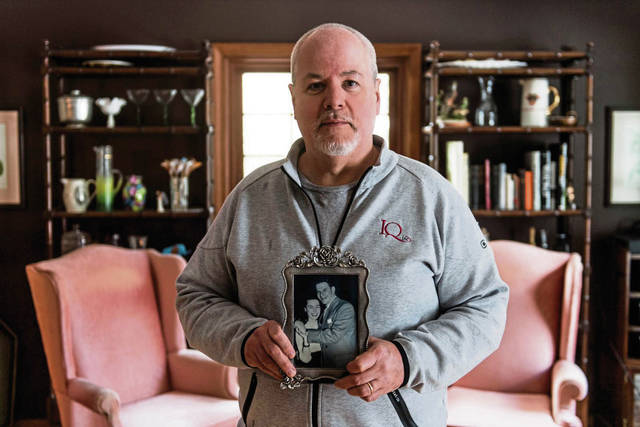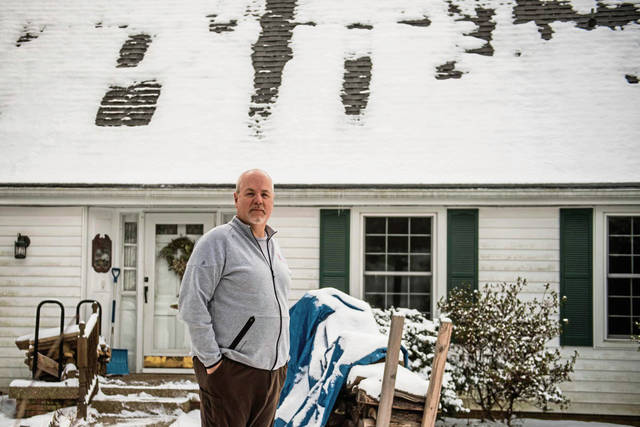Westmoreland County among areas with most Pa. natives, census figures show
Sandy Dzaack was grateful to live in her family’s North Huntingdon home as the second generation to raise kids in the house.
Shortly before she and her husband, Chuck Edmonds Jr., bought the home from the estate, he was diagnosed with terminal cancer. Edmonds died three years later, leaving Dzaack to raise their 3- and 5-year-old boys.
“Because I knew most of the neighbors, it made things much easier on me than if I had been living in a ‘strange’ neighborhood,” Dzaack said. “One neighbor in particular … I had actually pretty much grown up with him. He was a huge father figure in my sons’ lives.”
Like many Westmoreland County residents, Dzaack continues to live in the same area where she grew up. About 86 percent of county residents were born and raised in Pennsylvania, according to census figures.
Governing.com this month compiled a nationwide, county-by-county map showing the areas of the country where many people likely live near where they were born compared with places where much of the population relocated. The project was completed using data from the 2017 American Community Survey 5-Year Estimates, which the U.S. Census Bureau released in February.
Across the United States, about half of adults 25 and older live in the state where they were born, Governing.com reported. Some counties in Florida and Nevada have as few as 1 in 10 adult residents born in those states, its analysis found as part of a pattern of more Americans having gradually relocated to recently developed parts of the South and West.
“Sometimes a place may be home to a high concentration of natives because of its ability to retain residents, particularly younger adults,” Governing.com reported. “But more commonly, this concentration results from a failure to attract outsiders due to a lack of economic opportunity.”
Staying home
While the percentage of people who stay in an area varies across the nation, Western Pennsylvania and northeastern parts of the United States tend to show similar trends to Westmoreland County.
In the nine-county region of Southwestern Pennsylvania, Westmoreland has the second-highest percentage of Keystone State natives behind only Armstrong County (90 percent).
In all of Western Pennsylvania, Westmoreland ranked seventh in the 25-county region, trailing only Armstrong, Elk (90 percent), Venango (87 percent), Clarion (87 percent), Cambria (87 percent) and Jefferson (86 percent).
Urban areas, like Pittsburgh, tend to have a lower percentage of people who were born and raised in the state, often with a higher foreign population than in suburban or rural areas. Allegheny County had almost 76 percent of residents (670,000) born in Pennsylvania along with nearly 150,000 people born in other states and 57,470 born in other countries.
Philadelphia County had almost 61 percent of people born and raised in the state, a trend that dwindles in New Jersey and New York counties closer to New York City.
“That has been the pattern for a long time, with population growth rates in the east and south central parts of the state consistently higher than other parts of the state,” said Christopher Briem, regional economist at the University of Pittsburgh who studies demographic trends. “One part of that is the growth of nearby metropolitan regions.”
Central Pennsylvania, Briem said, is affected by growth around the Washington, D.C., area, while Philadelphia and other northeastern areas of the state are impacted by New York — a trend created by young people moving to cities for work or an education.
John Davies, 59, who lives in his family’s Unity home with his wife, was a part of that trend in 1979 when he moved to Pittsburgh to attend college.
After he found a job, he remained in the city for 35 years. He finally came back to his childhood home after his wife decided she wanted to live in a more rural setting. Now, Davies is again surrounded by three people he grew up with who also decided to remain in their family homes.
“Our street was always cohesive,” Davies said. “We have crime watch meetings and picnics for the whole street. We have a Facebook group. It’s definitely not a street of strangers.”
Recruiting next generation
But in an area like Westmoreland County, which is seeing an aging population, bringing in new residents from out of state and encouraging young people to stay is vital. According to county Commissioner Gina Cerilli, in 10 years there will be 70,000 open jobs in the region.
While commissioners encourage high school students to attend trade schools to help fill some of the manufacturing positions that will open up over the next few years, they also are putting a focus on attracting a younger generation into Westmoreland County.
“We are working on attracting the students to stay here upon graduation, securing employment, buying a house and raising their families here,” Cerilli said.
A plan passed by commissioners last year focuses on five points to help attract young people to the county — leverage local talent, assist small businesses, advance entrepreneurialism, connect with technology and provide development-ready locations.
“Our employers are struggling to find workers, and it’s prominently blue-collar workers, but … it’s white-collar workers as well,” said Chad Amond, president and CEO of the Westmoreland County Chamber of Commerce.
Millennials also are having fewer children than the baby boomer generation, Amond said. According to census data, the number of residents living in Westmoreland County has steadily declined since its peak in 1980.
“The bottom line is, I think the 86 percent is a good thing,” Amond said. “(Residents) admire and love Westmoreland County. But with our aging population, we just need to make sure that we are recruiting and bringing in additional populations to fill the jobs.”
Remove the ads from your TribLIVE reading experience but still support the journalists who create the content with TribLIVE Ad-Free.


